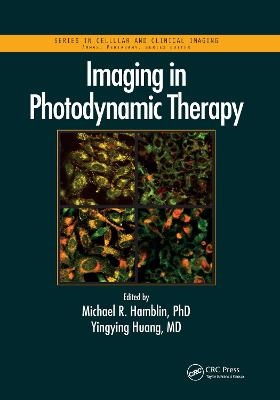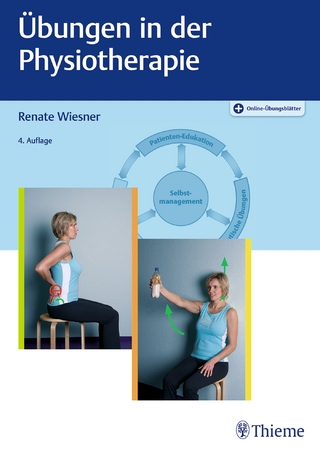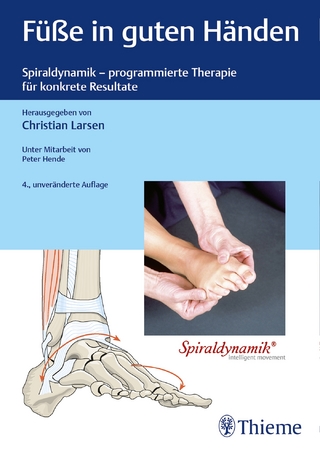
Imaging in Photodynamic Therapy
CRC Press (Verlag)
978-0-367-78235-1 (ISBN)
This book covers the broad field of cellular, molecular, preclinical, and clinical imaging either associated with or combined with photodynamic therapy (PDT). It showcases how this approach is used clinically for cancer, infections, and diseases characterized by unwanted tissue such as atherosclerosis or blindness. Because the photosensitizers are also fluorescent, the book also addresses various imaging systems such as confocal microscopy and small animal imaging systems, and highlights how they have been used to follow and optimize treatment, and to answer important mechanistic questions. Chapters also discuss how imaging has made important contributions to clinical outcomes in skin, bladder, and brain cancers, as well as in the development of theranostic agents for detection and treatment of disease. This book provides a resource for physicians and research scientists in cell biology, microscopy, optics, molecular imaging, oncology, and drug discovery.
Michael R Hamblin Ph.D. is a Principal Investigator at the Wellman Center for Photomedicine at Massachusetts General Hospital, an Associate Professor of Dermatology at Harvard Medical School and is a member of the affiliated faculty of the Harvard-MIT Division of Health Science and Technology. His research interests lie in the areas of photodynamic therapy (PDT) for infections, cancer, and stimulation of the immune system, and in low-level light therapy (LLLT) for wound healing, arthritis, traumatic brain injury, neurodegenerative diseases and psychiatric disorders. He directs a laboratory of around a dozen post-doctoral fellows, visiting scientists and graduate students. His research program is supported by NIH, CDMRP, USAFOSR and CIMIT among other funding agencies. He has published 272 peer-reviewed articles, over 150 conference proceedings, book chapters and International abstracts and holds 8 patents. He is Associate Editor for 7 journals, on the editorial board of a further 12 journals and serves on NIH Study Sections. For the past 10 years Dr Hamblin has chaired an annual conference at SPIE Photonics West entitled "Mechanisms for low level light therapy" and he has edited the 10 proceedings volumes together with four other major textbooks on PDT and photomedicine. He has several other book projects in progress at various stages of completion. In 2011 Dr Hamblin was honored by election as a Fellow of SPIE. Ying-Ying Huang, M.D., is a scientist in Dr. Michael Hamblin’s lab in Wellman Center for Photomedicine at Massachusetts General Hospital, an Instructor of Dermatology at Harvard Medical School. She was trained as a dermatologist in China. She has been at MGH Wellman Center for 5 years. Her research interests lie in the areas of photodynamic therapy (PDT) for infections, cancer and mechanism of low level light therapy (LLLT) for traumatic brain injury. She has published 48 peer review articles and 15 conference proceedings and book chapters. She is the co-editor of newly released Handbook of Photomedicine
INTRODUCTION. Looking out the optical window: Physical principles and instrumentation of imaging in photodynamic therapy. Photochemistry and photophysics of PDT and photosensitizers. IN VITRO MICROSCOPY FOR PHOTOSENSITIZER LOCALIZATION IN CELLS. Phthalocyanines in photodynamic therapy. Singlet oxygen luminescence imaging: A prospective tool in bioscience? Microbial biofilms and antimicrobial photodynamic therapy. High-content imaging for photosensitizer screening. IN VITRO MICROSCOPY OF CELL DAMAGE AND DEATH PROCESSES AFTER PDT. Enhanced efficacy of photodynamic therapy via an iron–lysosome–mitochondria connection: Studies with phthalocyanine 4. Role of cell death pathways in response to photodynamic therapy in gliomas. In search of specific PDT photosensitizers: Subcellular localization and cell death pathways. THERANOSTIC AGENTS AND NANOTECHNOLOGY. Quantum dots in PDT. Tetrapyrrole-based theranostic combinations of photodynamic action and magnetic resonance imaging. Theranostic applications of photodynamic molecular beacons. Tumor-specific imaging and photodynamic therapy targeting the urokinase receptor. SMALL ANIMAL IMAGING. Vascular imaging in photodynamic therapy. Photosensitizer activity imaging on the microscopic scale. Bioluminescence imaging for monitoring the effectiveness of photodynamic therapy for infections in animal models. CLINICAL IMAGING. Imaging of photosensitizers in skin. Brain tumor imaging with ALA. PDT of non-muscle-invasive bladder cancer with Hexylester Aminolevulinate: Optimization of the illumination wavelengths by fluorescence spectroscopy and imaging. Endoscopic imaging and photodynamic therapy. Spectroscopic imaging in prostate PDT. Fluorescent-guided resection in clinical oncology.
| Erscheinungsdatum | 06.04.2021 |
|---|---|
| Reihe/Serie | Series in Cellular and Clinical Imaging |
| Verlagsort | London |
| Sprache | englisch |
| Maße | 178 x 254 mm |
| Gewicht | 1347 g |
| Themenwelt | Medizin / Pharmazie ► Physiotherapie / Ergotherapie ► Orthopädie |
| Naturwissenschaften ► Biologie | |
| Naturwissenschaften ► Physik / Astronomie ► Angewandte Physik | |
| Technik ► Medizintechnik | |
| Technik ► Umwelttechnik / Biotechnologie | |
| ISBN-10 | 0-367-78235-9 / 0367782359 |
| ISBN-13 | 978-0-367-78235-1 / 9780367782351 |
| Zustand | Neuware |
| Informationen gemäß Produktsicherheitsverordnung (GPSR) | |
| Haben Sie eine Frage zum Produkt? |
aus dem Bereich


